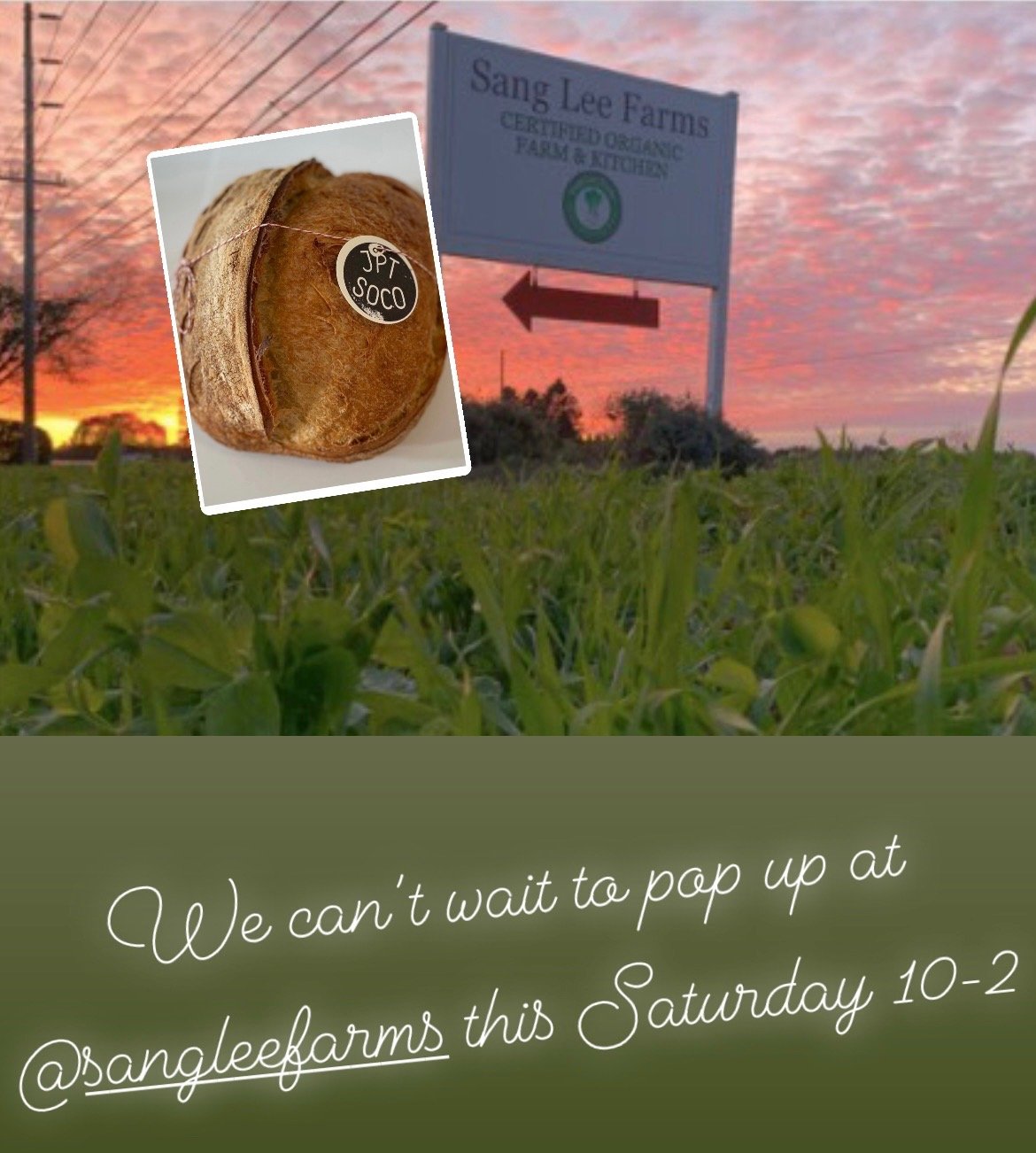Sang Lee Farms pop-up and why does sourdough take so long?
We are popping up at Sang Lee Farms this coming Saturday May 21 from 10am-2pm.
It will be a fun day on the farm. May 21 is Sang Lee’s open house and farm tour day, with a full schedule of events for the whole family. There will be farm tours led by Fred Lee, a gardening workshop, stir fry workshop, children’s plant a seed and a session about herbalism. We will be on site with a pop up farm stand selling our full product offering from classic sourdough breads to sourdough cinnamon rolls, roasted coffee beans and cold brew. The weather is supposed to be spectacular, sunny and 80 degrees. We hope to see you there!
Sang Lee Farms 25180 County Road 48, Peconic, NY 11958
For the rest of May, our schedule as of now is:
Fridays
Sang Lee Farms in Peconic by 9am for our classic sourdough batard.
Lombardi’s Love Lane Market in Mattituck by 10am for our classic sourdough, chocolate sourdough and roasted coffee beans.
Saturdays
Southold General by 8am for our classic sourdough and roasted coffee beans.
Pop-up market Saturday May 28 at Jamesport Farmstead.
Why does sourdough take so long to make?
Sourdough made a big resurgence during the pandemic because the process to make it is so long that you literally have to be home all day to manage it. That is also why few people attempt to do sourdough baking at real scale. (We do not count as baking at scale, I’m thinking Tartine-scale.). The simple answer to the question above is that the natural yeast in sourdough requires more time to do its thing than regular yeast from the grocery store. But there is a specific part of the bread making process where the waiting is felt the most.
There are three distinct parts to sourdough baking - mixing, shaping and baking. Shaping and baking require some skill and plenty of iteration to achieve consistent results, but it’s the mix that makes the whole thing take So. Very. Long. Thankfully, the mix can be done successfully with minimal experience. Just be sure to line up a friend, spouse or neighbor to fill in if you need to leave the house. Here’s a peek into the schedule that we use:
Day 1
Mix flour and water until just incorporated. Wait 1 hour. This waiting part is called autolyse (pronounced auto-lease like a car lease). During this time the flour becomes fully hydrated and the glutens, which give the dough its structure, start to form.
Add the leaven aka wild yeast aka the bigger version of your starter that you bake with, and salt for flavor, and mix for 15 minutes. You have just kicked off the fermentation process.
Let the dough rest for 30 minutes.
For the next 2 hours, stretch and fold the dough over itself in a complete turn every 30 minutes e.g. 1, 1:30, 2, 2:30, 3. Notice that I didn’t put am or pm because it’s totally possible you’re doing this in the middle of the night. Through this process you are developing the glutens which give the dough its body and bounce.
When done, cover and refrigerate (what we do) or keep it at room temperature, wait a few more hours, shape, wait at least 3 more hours and bake. Notice that my timing is unspecific here - when to move on to next steps all depends on the climate, temperature, humidity, strength of your leaven, whether the bread gods are loving you that day, etc.
What we do is refrigerate over night, shape on Day 2, refrigerate overnight again and bake on Day 3. We love a low and slow fermentation that gives the bacteria in the leaven a chance to break down the hard-to-digest gluten, liberate minerals, and add B vitamins. The complex flavor develops over time too.
And THAT my friends, is why sourdough takes so long. And why do we do it? Because we like to make something with our hands that consists of flour, water and magical fermentation. We like the way the dough feels, the way it smells, and how it nourishes us. Plus we do everything the hard way when it comes to food. It feels important to us to get back to the basics for things that we put into our bodies. If you’re reading this, you probably do too.
Thanks for reading this far bread friends!
Warmly, Ana and Brett



